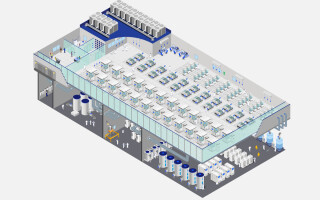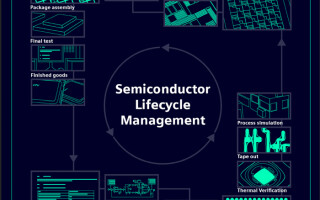Autonomous vehicles on the road: Delphi and Tesla Motors
April 06, 2015

It's an exciting time for autonomous driving. In the last nine days, Delphi's Roadrunner automated driving vehicle completed a ~3,400 mile drive from...
It’s an exciting time for autonomous driving. In the last nine days, Delphi’s Roadrunner automated driving vehicle completed a ~3,400 mile drive from San Francisco to New York City – a trip the first of its kind, the longest autonomous driving trip conducted yet. On completion of its journey, Delphi says the car was able to navigate through the mountains, traffic, trucks, road construction, heat, and even a rogue tumbleweed.
The Roadrunner vehicle made its debut at CES 2015, where Delphi showed off its six long-range radars, four short-range radars, three vision-based cameras, six lidars, a localization system, intelligent software algorithms, and a full ADAS suite.
Images and videos highlights of the drive are available at the Delphi site.
Autonomous vehicle testing is amazing to see, but also exciting is the idea that very soon we’ll have autonomous driving features on vehicles already on the road. Last month real-life Tony Stark and CEO and Chief Product Architect of Tesla Motors Elon Musk says Tesla’s upcoming 7.0 software update this summer will allow Model S vehicles to drive autonomously.
Lucky Model S owners won’t be able to completely ignore the wheel, gas pedal, brake pedal, and roads on their way to work the morning after the software update, but some important baby steps will be available.
The “autopilot” mode will allow hands-free highway driving, summoning of the Model S with a smartphone, and self-parking in garages. These features will be added to Tesla’s toolbox of active safety systems – emergency braking, blind spot detection, front/side collision warnings, and lane assist (I believe an actual lane keeping feature will be coming out soon… Tesla Model S owners – feel free to confirm or correct!). Evan Ackerman at the IEEE Spectrum has an interesting point that the low-speed abilities of Tesla’s upcoming updates are actually the more unique autonomous driving feature to come out.
It’s questionable whether these features are technically legal – Tesla says their system doesn’t conflict with current regulations – but as long as drivers are vigilant in making sure their vehicle is behaving they can probably get away with it. Just don’t drink and autopilot yet – features that allow for all the sticky situations of city driving home from the bar aren’t ready yet! Tesla spokesperson Alexis Georgeson and Elon Musk himself have reinforced that drivers need to be paying attention – they’re still at fault if something goes wrong – they can’t blame the autopilot.
We’re still a ways off from completely autonomous vehicles, but it’s very exciting to see the automotive industry taking these steps to get autonomous driving features actually functional out on the road. I’m still saving up for my Tesla Model S or waiting for the more affordable model, but hopefully soon the basic autonomous functions are widely available. Though many people don’t trust a computer to drive, I think the roads will be a much safer place when the vehicle’s many sensor and safety systems can take over.





